SEO for e-commerce websites is a free way to make your website more visible on Google search result pages (SERPs) and attract more traffic. A well-ranked page will receive more traffic, so it’s desirable to have your page as high as possible. From this perspective, SEO is crucial for websites like these.
Why is SEO Important for E-commerce Websites?
When consumers need a product or service, they often turn to Google for a search. After researching options, tips, comparisons, and other information that will help them make informed decisions, they decide where to purchase the product or service. If your website doesn’t appear in SERPs, you lose critical access to qualified and relevant e-commerce customers. According to a study by NChannel, 44% of people begin their online shopping journey with a Google search. Additionally, 37.5% of traffic to e-commerce sites comes from search engines (SEMrush).
What Can You Do? You can check the following E-commerce SEO Checklist items for your website.

Keyword Analysis
Keyword research forms the foundation for various factors such as site architecture, URL structure, and content strategy. How can you conduct keyword research for an e-commerce site? It’s relatively simple:
- List all pages on your site.
- Find and match suitable keywords for each page.
Before using a keyword, research it to understand how frequently people search for it (keyword search volume), how competitive it is in paid advertising (cost per click or CPC), and what people are looking for when using that keyword.
Keyword research often focuses on “informational keywords,” which are the keywords people use to search for “how-to” content on search engines, like “how to make the best coffee.”
Commercial
Keywords in this category are often referred to as having a “shop now” intent. They express a strong intention for the searcher to take action:
- Deals,
- Purchase,
- Coupon Code,
- Buy Online,
- Join,
- Subscribe,
- Free shipping etc.
Keywords in this category may include phrases like that.
Informational
These keywords indicate an intent to gather information, where the researcher is willing to learn more about the query.
- How
- Why
- What
Purely informational queries may include modifiers .
Transactional
Keywords in this category are situated between commercial and informational intent. They represent queries that could both indicate an intent to make a purchase and a desire to learn more about the concept like:
- Reviews
- Vs
- Top 10
- Top 5
- Best
Navigational
Keywords containing brand names fall into this category, indicating that the researcher already knows exactly where they are going. Brand name searches signify intent.
Conducting Competitor Research
If you’re unsure where to start with on-site optimization for your e-commerce site, your competitors are your best option. Larger competitors have likely taken the necessary steps to optimize their websites, and you can learn many of their secrets from their own sites.
How do you determine if a website has optimized for a specific keyword? You can use browser extensions like Moz to see the SEO title and description used in your competitors’ title tags. Tools like Ahrefs can show you which keywords your competitors rank for in both organic and paid search.


Home Page Importance
While the home page is often a critical focus for SEO budgets and energy, it is not the only page you should focus on. Nevertheless, optimizing your home page is essential.
Home Page Title Tag
The SEO title tag is one of the most critical elements of on-site search optimization. It should include your business name along with the targeted main keyword phrase. Keep the title tag under 70 characters and write it to be visible in search results.
Home Page Meta Description
The meta description of your home page is a 160-character description of your business and will be visible below the title tag in search results. Writing it to encourage visitors to visit your website and using your target keywords within this description is important.
Home Page Content
The content on your home page should help visitors gain clear information about your business and the products you offer. Consider highlighting a few of your best products and unique categories. Don’t forget to include internal links from this page.

Site Hierarchy
When adding products and categories to your store, remember that site architecture plays a crucial role. Ensure a clean navigation hierarchy for both users and search engine bots.
Internal Linking
Internal links serve two main purposes: demonstrating how pages relate to each other for improved e-commerce performance and encouraging visitors to explore more of your site, thus increasing time spent on the site.
Pay Attention to Product Pages
Product pages are the lifeblood of your business, so you should focus most of your energy on optimizing them. While many e-commerce store owners write a few lines of text, add interesting images, or create promotional videos for each product, Google needs more information to find them.
Product Name
The name of your product is crucial. In many cases, the product name is used in the SEO title and URL of your product page. Consider adding a common search term or keyword phrase to your products.
Product Image
Images are a vital part of your product page. Imagine being in your customer’s shoes. Would you be more likely to purchase from a site that shows the product from multiple angles or from a site without any images or with small, unreadable images?

Customer Reviews
Reviews are another way to increase customer trust in your product, so allowing user reviews if you have a good product can be advantageous. Negative reviews are not always a bad thing. Consider this – if you have a higher-priced product with excellent reviews and a relatively lower-priced product with better reviews, people are more likely to choose the higher-priced product, leading to more sales for your business.
FAQ Content
Do people ask questions about your products? Definitely. Having product-specific FAQ content on your product pages is key to conversions.
SEO Tools for E-commerce Sites
Ahrefs
You can use Ahrefs to optimize and analyze your e-commerce SEO strategy. It helps you find backlinks to your site and your competitors’ sites, analyze competitor traffic, and compare your positions.
Screaming Frog
Screaming Frog is an excellent tool used for detecting important technical issues, such as broken links, missing meta descriptions, and duplicate content on your site. It is valuable for optimizing site health. You can use the free version to analyze up to 500 URLs.
Ubersuggest
Ubersuggest is a useful tool for identifying the best keywords to target for your e-commerce site and finding related keywords that will help improve your rankings.
If you are looking for an SEO agency for your website, you can contact us for detailed analysis and evaluation.
Author: Hakan Karaman





